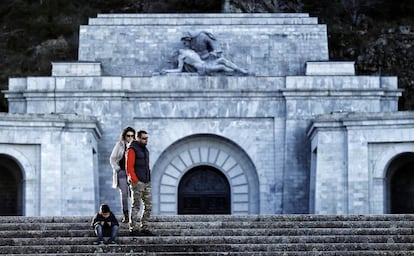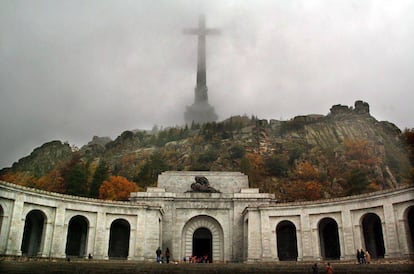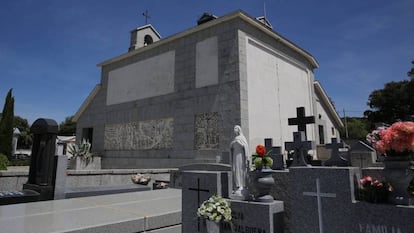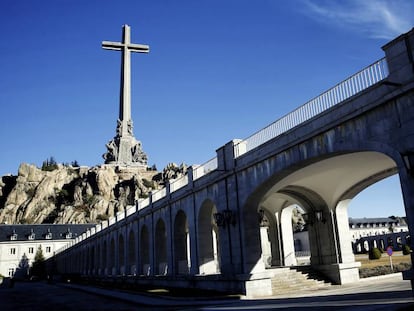Spanish Congress approves removal of Franco’s remains from Valley of Fallen
Vote has huge symbolic importance, but does not mean exhumation will take place any time soon
Spain’s Congress on Thursday passed a non-binding motion calling for the body of former Spanish dictator Francisco Franco to be removed from the massive – and highly controversial – Valley of the Fallen memorial near Madrid.

A total of 198 deputies voted in favor of the motion put forward by Spain’s opposition Socialists (PSOE) in the lower house, with just one vote cast against the proposal. However, the 140 deputies from Spain’s conservative ruling Popular Party abstained.
The vote had been set to go ahead on Tuesday but was delayed until Thursday after the left-wing Unidos Podemos group in Congress called for amendments to the original motion. However, the group later agreed to back the proposal despite those changes not being incorporated.
The Valley of the Fallen has just two marked graves, and one of those belongs to Franco
Thursday’s vote has no legal force but is of great political significance. The 13.6-square kilometer Valley of the Fallen site remains hotly contested in a country still struggling to come to terms with the legacy of the fascist dictatorship of Franco, who was the Spanish head of state from the end of the Civil War in 1939 to his death in 1975.
The site was ostensibly built to commemorate all of the victims on both sides of Spain’s bitter and bloody Civil War, and the remains of more than 33,000 victims of the conflict lie there. But critics point out that the Valley of the Fallen, which features a basilica and a 150-meter-high cross which dominates the surrounding countryside, contains just two marked graves: those of Franco himself and José Antonio Primo de Rivera, the founder of the Falange, Spain’s fascist-inspired political party. At the same time, thousands of prisoners of war who fought against Franco in the civil conflict were among the workforce used in its construction.
If the motion passed on Thursday were to be put into effect, Franco’s remains would be exhumed – something United Nations experts have called for – while those of Primo de Rivera would be moved to a far less prominent area in the basilica where they are now housed.

The proposal also calls for a census of infrastructure built using forced labor with the aim of placing memorial plaques in their memory. At the same time, the motion calls for a feasibility study on the possibility of setting up a DNA bank to help with the identification of unidentified victims of the Civil War and subsequent dictatorship.
The PSOE motion is part of a package of measures designed to revive Spain’s Historical Memory Law, which makes provision for the removal of statues and the changing of place names connected to the Franco regime. The law was passed by former Socialist Prime Minister José Luis Rodríguez Zapatero in 2007 but the Popular Party stripped funding from associated programs when it came to power in late 2011.
In January, the PP formally denied that the Valley of the Fallen honors the legacy of Franco, saying that its government had fulfilled all of its legal requirements when it came to removing Francoist imagery and noting that political acts honoring the Civil War were forbidden at the site.
A new resting place for Franco?

The remains of Spanish dictator Francisco Franco, housed at the Valley of the Fallen since 1975, could find a new home in the family crypt where his wife Carmen Polo Martínez-Valdés was buried in 1998. That tomb is located in Mingorrubio, a military colony that was home to members of Franco’s Royal Guard during the dictatorship, and which is located some 15 kilometers from the center of Madrid in the capital’s El Pardo district.
The family pantheon is in a heritage protected area and was a gift to Franco from former Madrid Mayor Carlos Arias Navarro in 1960. It is also close to the Royal Palace of El Pardo where Franco lived from 1940 until his death in 1975. Franco’s inner circle suggested the idea of the dictator’s burial at the Valley of the Fallen – despite his not having died during the Civil War – as a form of challenge to the future king, Juan Carlos de Borbón, who was not in a political position to oppose the move.
English version by George Mills.









































